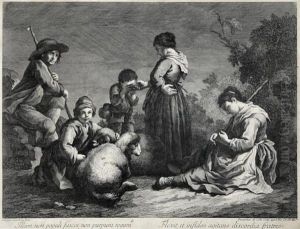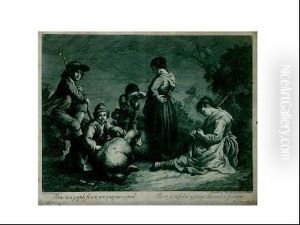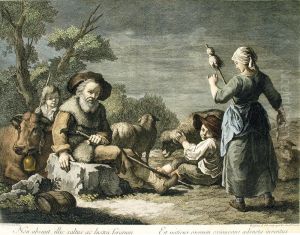Dal Pellegrino Colle Paintings
Dal Pellegrino Colle, born in 1467 in the small but culturally vibrant town of Borgo San Sepolcro, now known as Sansepolcro, in Tuscany, Italy, was an artist whose works have, over the centuries, slipped into the quieter corners of Renaissance art history. Despite the lack of widespread recognition in contemporary times, his contributions to the art world during the Italian Renaissance were notable for their innovative approach to religious and secular themes, blending them with a profound sense of human emotion and natural beauty.
Colle's early life was steeped in the artistic traditions of Tuscany, a region famed for its contributions to the Renaissance movement. Under the tutelage of local masters, he developed a keen eye for detail and a deep appreciation for the harmonious interplay of light and shadow, a technique that would later become a hallmark of his work. His education was not limited to the arts; he was well-versed in the humanist ideas that were sweeping through Italy at the time, which influenced his approach to art as a tool for intellectual and spiritual inquiry.
By his early thirties, Colle had begun to establish himself as a painter of note, receiving commissions from both the Church and wealthy patrons. His works, primarily frescoes and altarpieces, were celebrated for their vivid portrayal of divine and earthly subjects, imbued with a sense of realism and emotional depth that was uncommon at the time. His ability to capture the human condition, in all its fragility and strength, resonated with his contemporaries and elevated his status as an artist.
One of Colle's most significant contributions to the art world was his experimentation with perspective, a technique that he pushed beyond the traditional boundaries of the time. His landscapes, often serving as backdrops for religious scenes, conveyed a sense of infinite space and depth that was revolutionary. This innovative use of perspective not only enhanced the narrative quality of his works but also influenced his peers and successors, contributing to the evolution of Renaissance art.
Despite his achievements, Colle's name did not endure in the annals of art history as prominently as some of his peers, such as Leonardo da Vinci or Michelangelo. This obscurity may be attributed to the limited number of his works that have survived, many of which were lost to time or destruction. Furthermore, the absence of comprehensive documentation on his life and work has made it challenging for historians to fully assess his impact on the Renaissance art movement.
Dal Pellegrino Colle passed away in 1547, leaving behind a legacy that, while not as celebrated as that of some of his contemporaries, remains an important testament to the richness and diversity of Renaissance art. Today, scholars continue to study his surviving works, slowly piecing together the life and contributions of this overlooked master, ensuring that his innovative spirit and artistic achievements are not forgotten.


